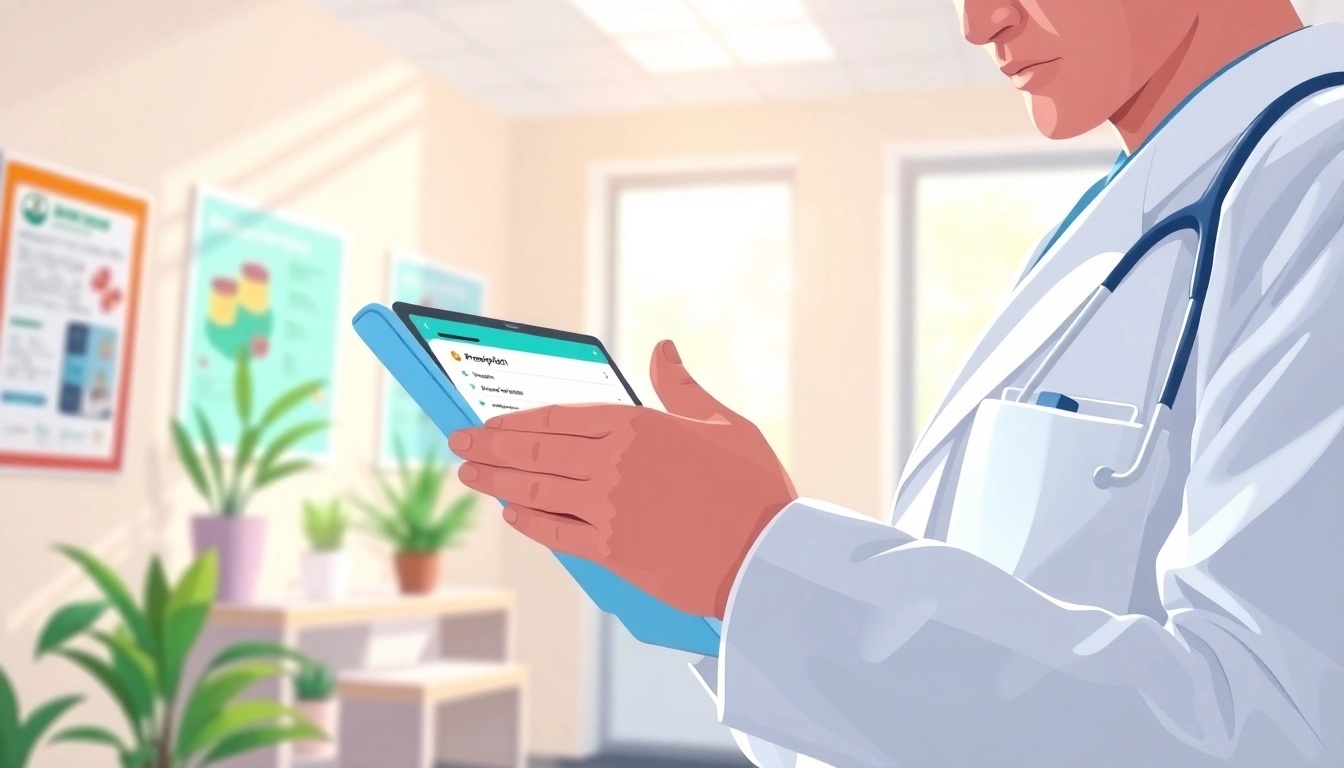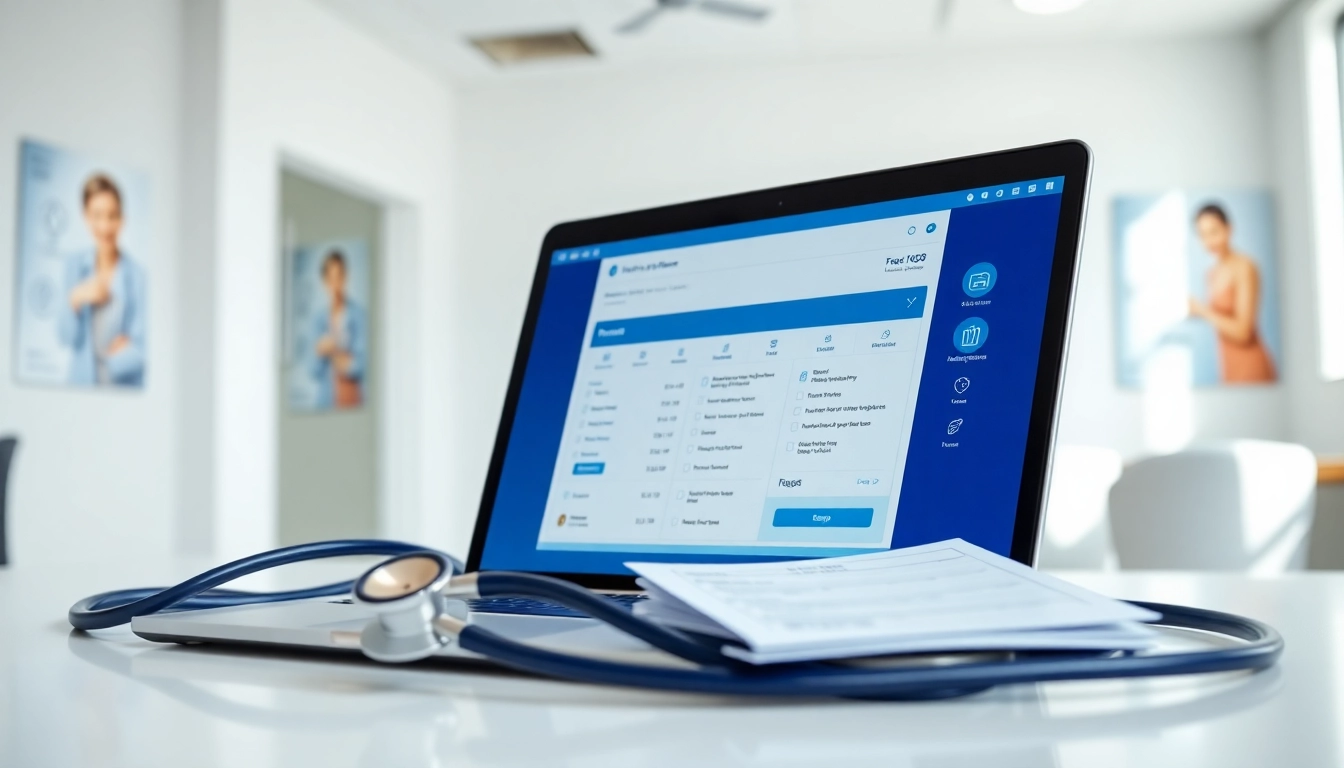Understanding ePrescription Apps
What Are ePrescription Apps?
ePrescription apps are digital solutions designed to facilitate the prescribing process in healthcare. These applications allow healthcare providers to create, transmit, and manage electronic prescriptions for patients rather than using traditional paper scripts. By leveraging technology, ePrescription apps enhance the accuracy, efficiency, and accessibility of prescriptions, significantly transforming how medications are managed within the healthcare landscape.
How ePrescription Apps Work
The operation of ePrescription apps revolves around a centralized digital platform where healthcare providers can input prescription details. These details are securely transmitted to pharmacies, ensuring that patients receive their medications without the delays associated with paper prescriptions. When a healthcare provider issues a prescription through an ePrescription app, it typically involves the following steps:
- Patient Information: The provider inputs the patient’s information, including medical history and current medications.
- Prescription Details: The provider selects the medication, specifies the dosage, and indicates the quantity required.
- Digital Transmission: The app securely transmits the prescription to the patient’s chosen pharmacy.
- Pharmacy Confirmation: The pharmacy receives the prescription, verifies it, and prepares it for the patient.
- Patient Notification: Patients can receive notifications regarding their prescription status, including when it is ready for pickup.
Categories of ePrescription Apps
ePrescription apps can be categorized based on their specific functionalities and target users. Some common categories include:
- Standalone ePrescription Apps: These are dedicated apps focusing solely on prescription management.
- Integrated Health Platforms: These apps integrate ePrescribing with other healthcare services, such as telemedicine or health record management.
- Pharmacy Management Solutions: Apps designed for pharmacies that include ePrescribing as a feature among their services.
- Patient-Focused Apps: These apps allow patients to manage their prescriptions directly, offering features such as refill requests and tracking.
Advantages of Using ePrescription Apps
Increased Efficiency in Prescription Management
One of the most notable advantages of using eprescription apps is the substantial increase in efficiency they bring to the prescription management process. Traditional prescription methods often involve delays due to paperwork and communication gaps between healthcare providers and pharmacies. ePrescription apps eliminate these delays by automating and streamlining the entire prescribing process.
With real-time data access, healthcare providers can quickly update or modify prescriptions based on patient needs or changing medical circumstances. This leads to faster patient care, allowing prescribers to focus more on clinical responsibilities instead of administrative tasks. Additionally, the integration of these apps with pharmacy systems means that prescriptions can be dispatched immediately, reducing waiting times for patients.
Enhanced Patient Adherence and Engagement
ePrescription apps significantly enhance patient adherence to medication regimens by providing crucial reminders and educational materials through the app. Patients are less likely to miss doses when they receive alerts and notifications directly from the app. Furthermore, many ePrescription apps include features that allow patients to track their medications and access information about their prescribed drugs, such as potential side effects and interactions.
Research shows that enhanced engagement leads to better health outcomes. When patients are more involved in managing their prescriptions and understand their treatment plans, compliance improves. As a result, healthcare providers can achieve better therapeutic results, leading to healthier communities and lower healthcare costs.
Reduction of Medication Errors
Medication errors can have serious consequences, including adverse drug reactions and potentially harmful health outcomes. ePrescription apps play a crucial role in reducing these errors by minimizing the risk of misinterpretation that often accompanies handwritten prescriptions. By using standardized drug databases and prescription guidelines, these apps help ensure that medications are accurately prescribed.
Moreover, ePrescription systems often incorporate decision-support tools that provide prescribers with alerts regarding potential drug interactions, allergies, or contraindications based on the patient’s medical history. This proactive approach contributes to safer prescribing practices, ultimately enhancing patient safety.
Key Features of ePrescription Apps
User-Friendly Interfaces
One of the vital elements for the successful adoption of ePrescription apps is their user-friendly interface. A simplistic design allows healthcare providers and patients to navigate the app easily, fostering a pleasant user experience. Key user-friendly features include:
- Intuitive layout that highlights essential functions.
- Customizable dashboards for quick access to frequently used features.
- Guided workflows that minimize user errors during prescribing.
Real-Time Prescription Tracking
Real-time tracking capabilities are essential for both healthcare providers and patients. With ePrescription apps, users can monitor the status of their prescriptions throughout the lifecycle, from issuance to fulfillment. This transparency allows for increased accountability and reduces the anxiety often associated with waiting for medications. Patients can also receive notifications about refill reminders, ensuring they never run out of essential medications.
Integration with Health Records
Integrating ePrescription apps with electronic health record (EHR) systems enhances the overall healthcare experience. This connection allows healthcare providers to access comprehensive patient information directly within the prescribing interface, leading to informed decision-making. Key benefits include:
- Access to a patient’s full medical history, including allergies, previous medications, and treatment plans.
- Streamlined workflows as providers do not need to toggle between multiple platforms.
- Improved coordination of care among different healthcare providers involved in a patient’s treatment.
Implementing ePrescription Apps in Healthcare
Assessing Organizational Needs
Before implementing ePrescription apps, healthcare organizations must assess their unique needs. This involves evaluating the current prescribing process, understanding the pain points, and identifying specific requirements that the app must meet. By conducting thorough assessments, organizations can select an ePrescription solution that aligns with their workflows and enhances operational efficiency.
Training Healthcare Providers
Successful implementation of ePrescription apps necessitates comprehensive training for healthcare providers. Training should cover not only the technical aspects of using the app but also best practices for leveraging its features to improve patient care. Ongoing support post-implementation is equally important to address any challenges and ensure user confidence in leveraging the technology.
Gathering Patient Feedback
Involving patients in the implementation process can provide valuable insights into the usability and effectiveness of ePrescription apps. Patient feedback helps healthcare organizations understand how well the app meets patient needs and identifies areas for improvement. Regular surveys, focus groups, or user experience interviews can yield crucial data to inform further enhancements to the app.
Measuring the Impact of ePrescription Apps
Patient Satisfaction Metrics
Evaluating the effectiveness of ePrescription apps requires tracking patient satisfaction metrics. Surveys can measure patients’ perceived quality of care, their comfort with the technology, and whether the app meets their needs. High satisfaction levels can indicate successful integration of the app into the patient experience, while low levels may highlight areas requiring improvement.
Cost-Benefit Analysis
A thorough cost-benefit analysis aids healthcare organizations in evaluating the financial implications of implementing ePrescription apps. This analysis should consider initial implementation costs, training expenses, and ongoing operational costs against the expected benefits, such as increased efficiency, reduced medication errors, and improved patient adherence. By quantifying the financial impact, organizations can make informed decisions about future technology investments.
Long-Term Adoption Rates
The long-term adoption rates of ePrescription apps are essential for determining their overall success and sustainability. Tracking usage metrics over time can reveal whether the app continues to meet user needs. If usage declines, it may indicate that further enhancements or additional training is needed to ensure its proper utilization within the healthcare organization.



